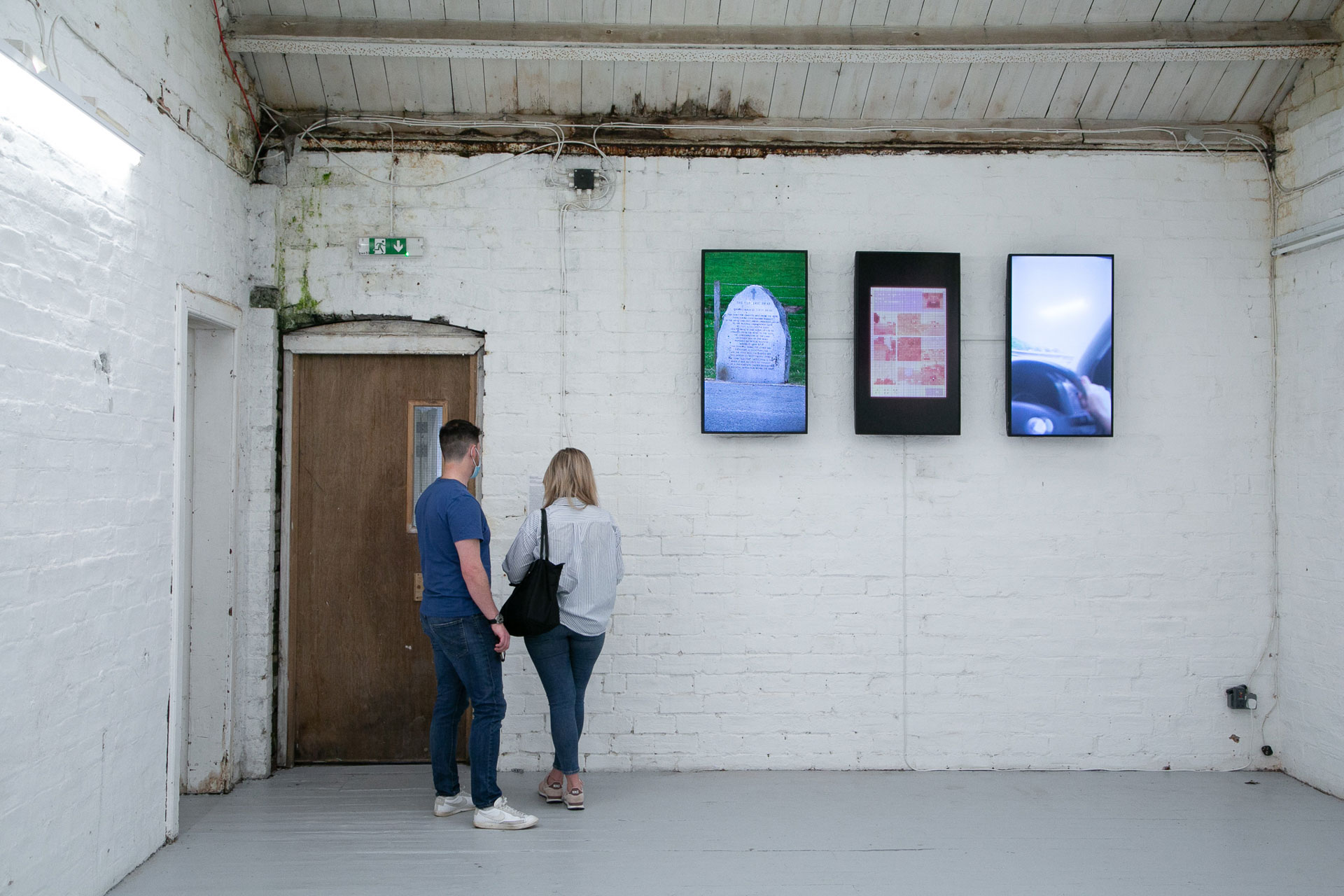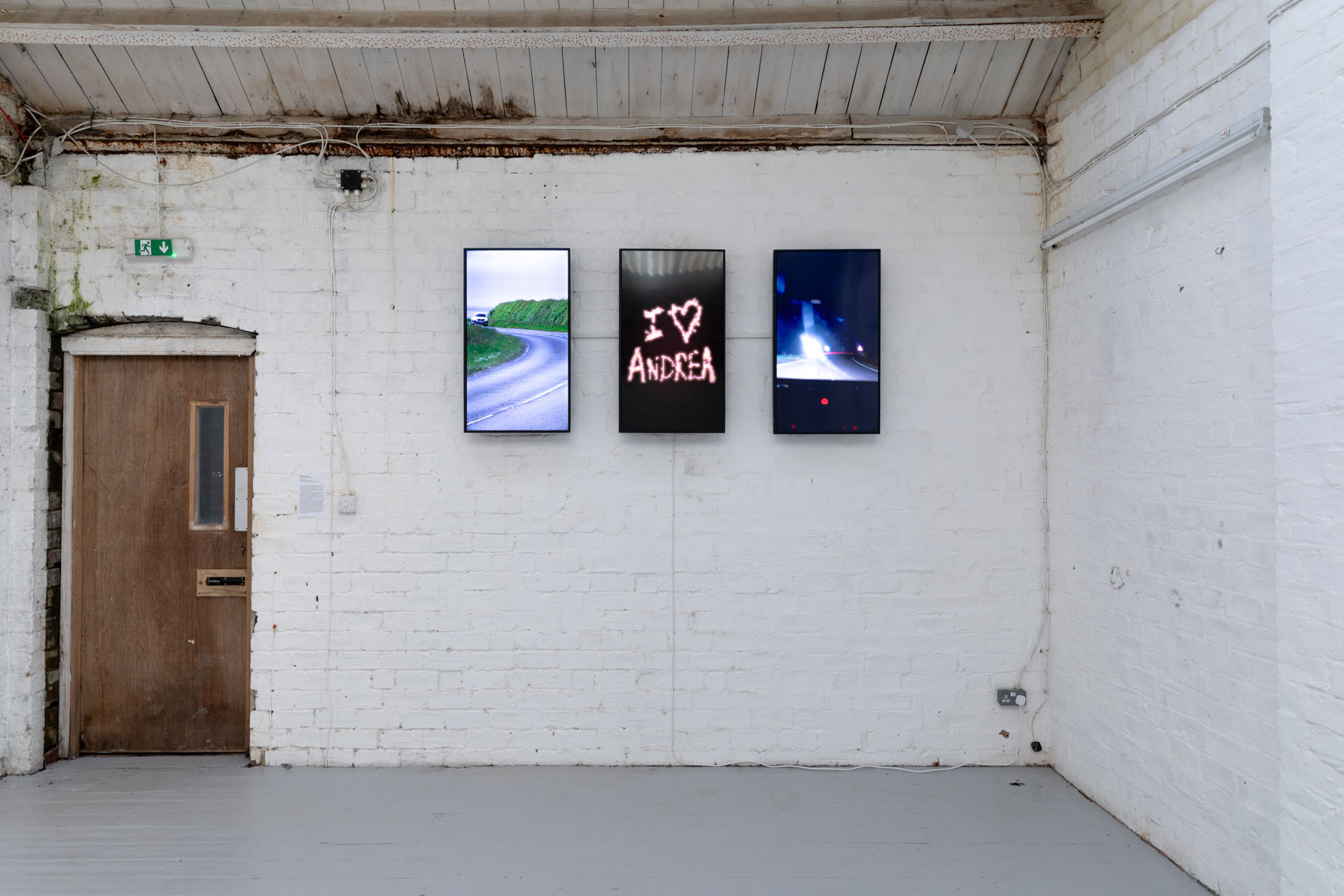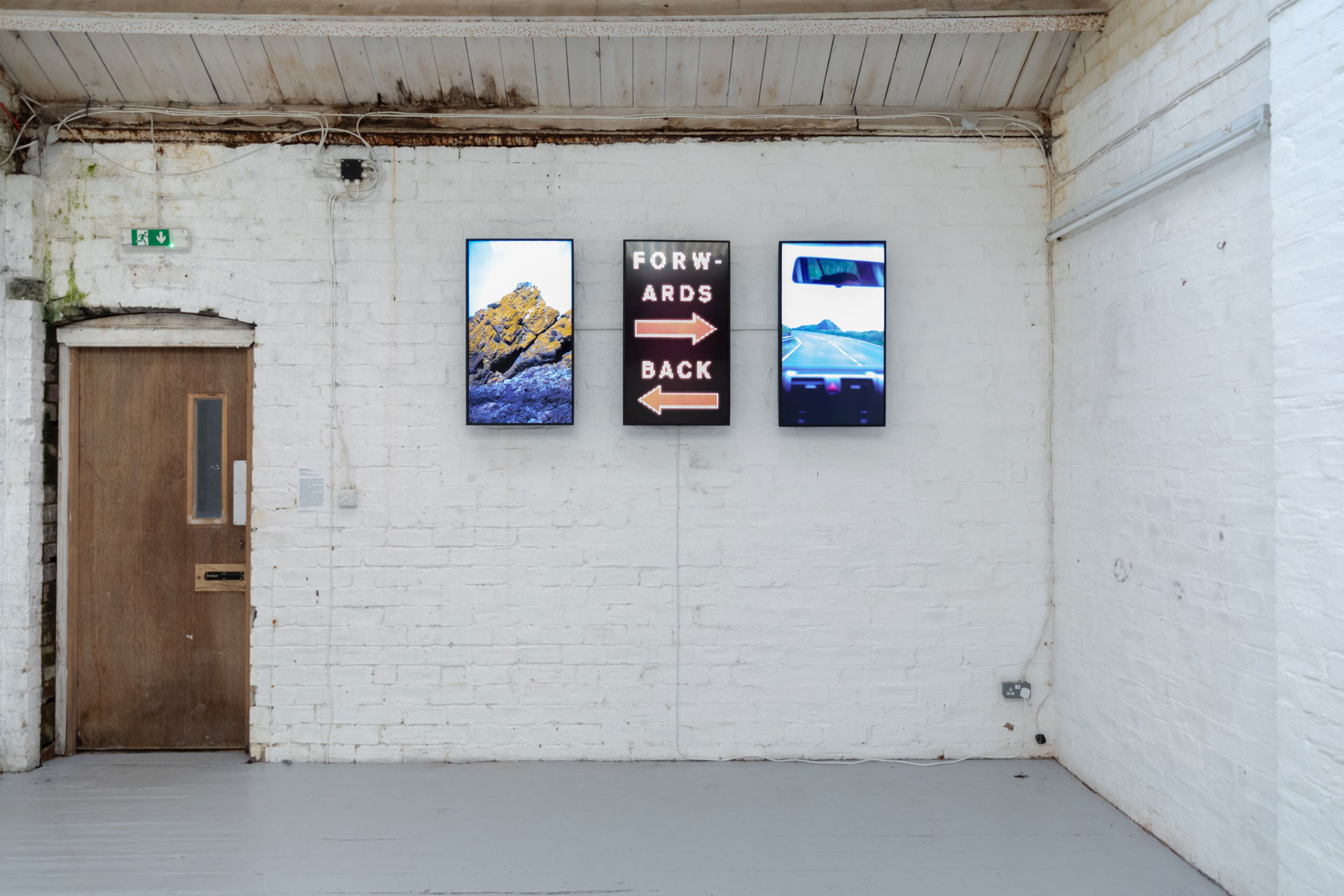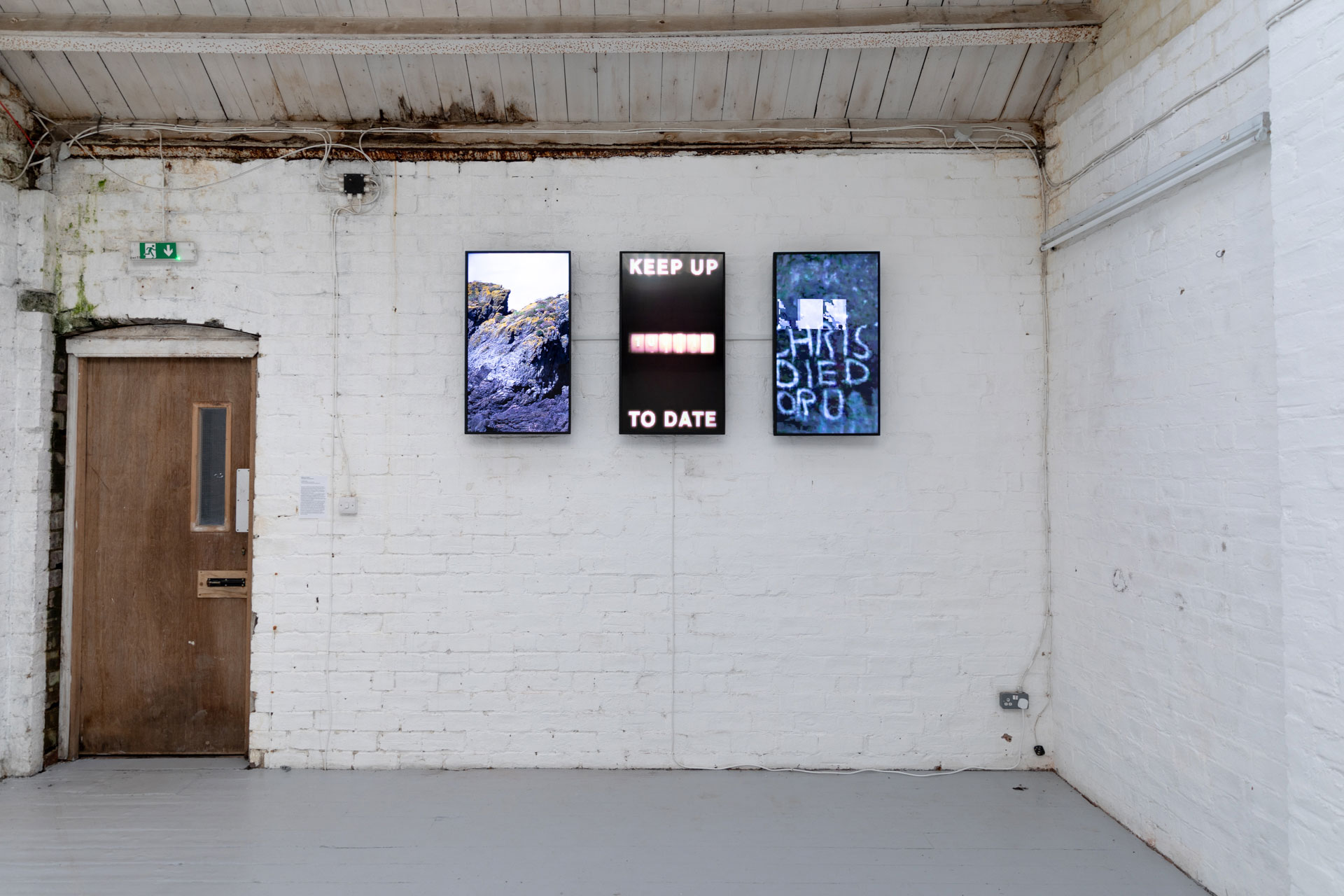INFORMATION SUPERHIGHWAY
The A77 is a network upon which packets and bundles of information and goods flow between Scotland and Northern Ireland. Beginning over water in Glasgow, the A77 runs south to the ferry ports of Cairnryan before running out to the sea again at its end in Portpatrick. It is one of the most dangerous roads in Scotland.
This timeline, the A77, diverts itself alongside the dense geological formations of the ‘Ballantrae Complex’, a time-map that forms the coastline between Girvan and Ballantrae. On this section of the A77 sits ‘Kennedy’s Pass’, a segment of road where the tarmac struggles to cling to the violent, varied, and dense rocks that envelop it.
The road that forms ‘The Electric Brae’ winds a quarter-mile between Croy railway viaduct and Craigencroy Gen. The Electric Brae defies perception, running both uphill and downhill simultaneously in all directions.
In a time of technological anxiety, when electricity expanded across Scotland, the Victorians understood the Electric Brae as born from this new network of currents sped above and below the topography of rural landscapes; ‘electric’. Contemporary belief suggests it is hills themselves that electrify the brae, defining and destabilising the reality of the road and the network.
The A77 is a network upon which packets and bundles of information and goods flow between Scotland and Northern Ireland. Beginning over water in Glasgow, the A77 runs south to the ferry ports of Cairnryan before running out to the sea again at its end in Portpatrick. It is one of the most dangerous roads in Scotland.
This timeline, the A77, diverts itself alongside the dense geological formations of the ‘Ballantrae Complex’, a time-map that forms the coastline between Girvan and Ballantrae. On this section of the A77 sits ‘Kennedy’s Pass’, a segment of road where the tarmac struggles to cling to the violent, varied, and dense rocks that envelop it.
The road that forms ‘The Electric Brae’ winds a quarter-mile between Croy railway viaduct and Craigencroy Gen. The Electric Brae defies perception, running both uphill and downhill simultaneously in all directions.
In a time of technological anxiety, when electricity expanded across Scotland, the Victorians understood the Electric Brae as born from this new network of currents sped above and below the topography of rural landscapes; ‘electric’. Contemporary belief suggests it is hills themselves that electrify the brae, defining and destabilising the reality of the road and the network.
2021
![]()
![]()
![]()
![]()
![]()




